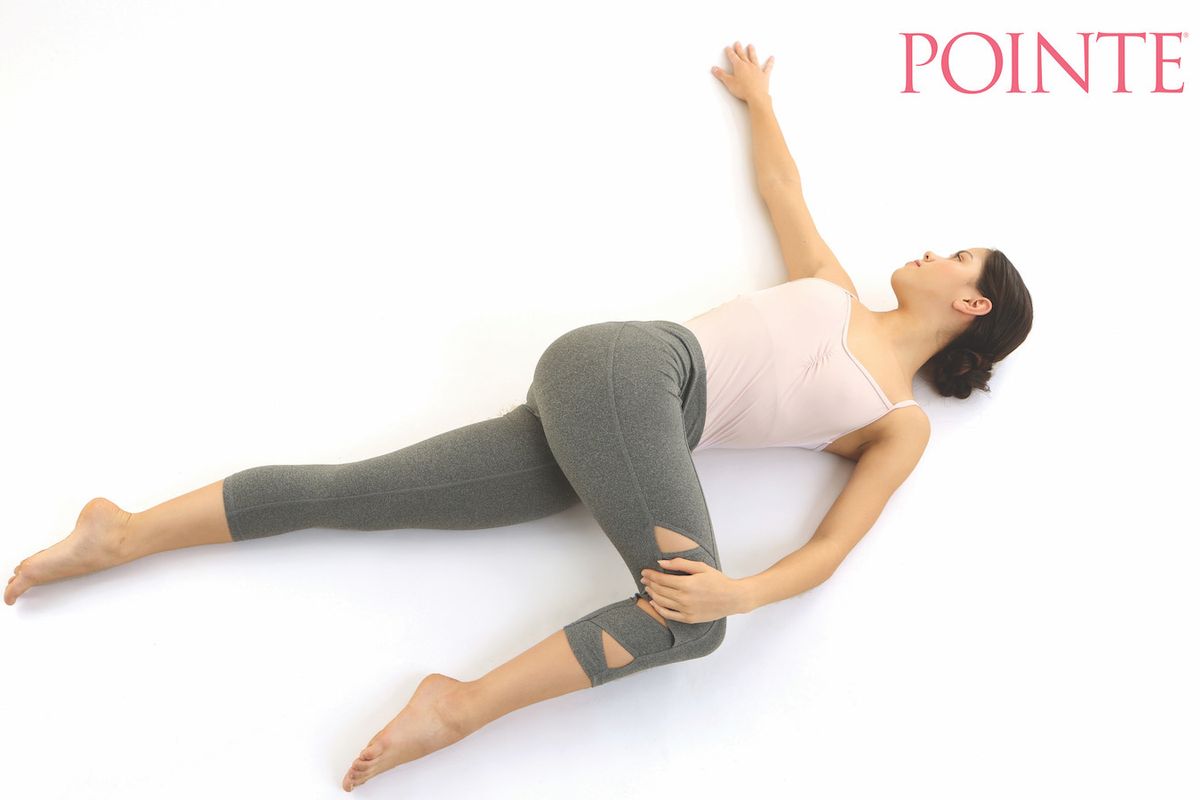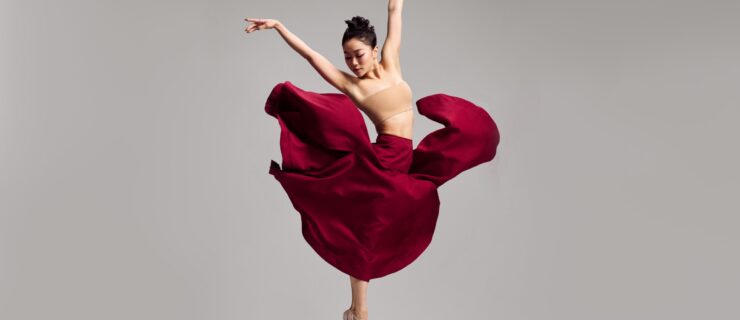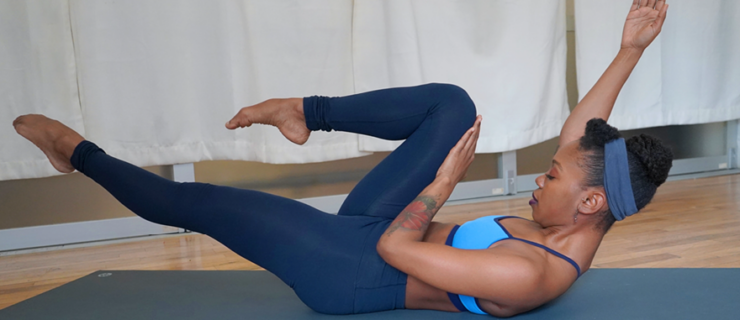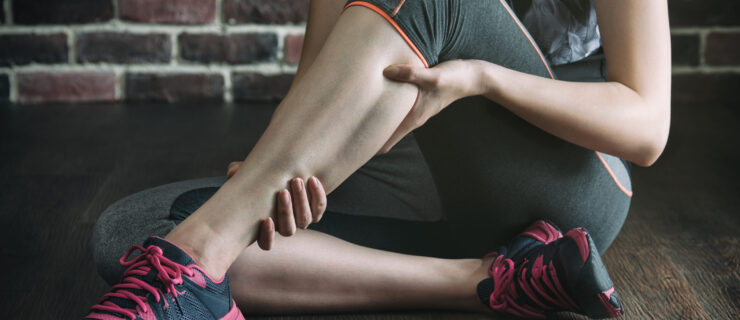Try This Full-Body Stretch Series for a Smarter Cooldown
During class, you’re tuned in to every aspect of your dancing. But when the day is over, you may be tempted to head home and skip out on a proper cooldown. Don’t: Going from grand allégro to a full stop is hard on your muscles. Bené Barrera, an athletic trainer who works with Houston Ballet, says, “If you’re doing an end-of-day cooldown, you’re going to need at least 20 minutes. That allows the muscles to calm down.” And your body should notice the difference: “You’ll have less trigger-point pain later, and your soreness might reduce a bit.” A proper cooldown may even help you sleep better.
But post-class stretching isn’t about sitting in a straddle. “As a dancer, you’re never truly isolating one area,” says Barrera. Your cooldown should mimic that. “You want to cover the whole body altogether. You don’t want to just stretch one muscle group.”
You’ll need:
- a doorframe or corner where two walls meet
- stability or BOSU ball
1. Pecs and Neck Muscles
Why: Ballet dancers often breathe “up top” to avoid sticking out their stomachs, and that pat- tern causes tension in the upper body. Plus, more contemporary choreography may require you to use your neck and head differently, so this area requires careful stretching.
Dynamic neck stretches: First, loosen up the area by bending the head back and turning it to the left and right to stretch the front of your neck. Once you feel a stretch, roll on to the next position. Bend your head to each side toward your shoulder to stretch the scalene muscles.
Doorframe stretch

Jayme Thornton
Standing in a doorframe, raise one elbow to 90 degrees and rest the forearm on the doorframe. Twist away from the raised arm until you feel a stretch in the front of the shoulder. Contract your pecs and try to pull your elbow forward (the frame will stop you) for 5 seconds. Relax for 10–15 seconds, and you should be able to ease further into the stretch. Do 3 reps of this contract/relax pattern, and repeat on other side.
Neck stretch with resistance
 Jayme Thornton
Jayme Thornton
Pull your head toward your right shoulder. Press your left ear into your right hand, as if trying to move the head toward the left shoulder, for 5 seconds. Relax for 10–15 seconds, and you’ll be able to stretch your head further toward your right shoulder. Do 3 reps and repeat on other side.
2. Hip Flexors and Quads
Why: “We see a ton of dancers bending over stretching their hamstrings,” says Barrera, but the front of the legs, which do the heavy lifting for movements like battement and développé devant, shouldn’t be neglected.
Runner’s lunge
 Jayme Thornton
Jayme Thornton
Kneel with your left knee on the ground and your left buttock engaged. To stretch the left ilioapsoas, lunge forward without taking the knee over the toe too much. For a deeper stretch, add a cambré to the right. Hold for 15–30 seconds on each side.
Standing quad stretch

Jayme Thornton
Hold one ankle behind you with the gluteus maximus slightly engaged to stabilize the pelvis and spine. Make sure both knees are parallel. If you don’t feel a stretch in your quad, attempt to straighten the knee of the bent leg and resist the action with your hand for 5 seconds. Then relax and you should feel the stretch more. If your working leg wants to turn out, Barrera says, grab that ankle with both hands to encourage parallel alignment.
3. Gluteus Medius, IT Band and Quadratus Lumborum
Why: This region is often overworked from actions like arabesque, attitude derrière and sissonne, or if you force your turnout. The quadratus lumborum (QL), in the lower back, aids in twisting and can lead to low-back strain from overuse.
Letter K stretch
 Jayme Thornton
Jayme Thornton
Lying on your back, cross the right leg over your body (with a sickled foot) to form a shape like the letter K. Think about the leg reaching down instead of up as you press the right foot and knee toward the floor—with your leg between 45 and 90 degrees, you should feel a stretch along the whole right leg, in your gluteus medius, IT band and maybe even into the QL. Reach your arms into a T to help keep your right shoulder on the floor to reduce back strain. Hold 15–30 seconds per side.
Figure 4 stretch
 Jayme Thornton
Jayme Thornton
For a deeper QL stretch, use the same setup, but bend the top leg so your body resembles a number 4. You should be able to twist the lumbar spine further. Hold 15–30 seconds per side.
Side stretch on ball
 Jayme Thornton
Jayme Thornton
To stretch the QL and obliques, lie sideways over a stability or BOSU ball. Try to crunch upward, and slowly release back down over the ball. You can also twist for- ward, exploring your range of motion until you find a good stretch. Move through these stretches dynamically on both sides.





